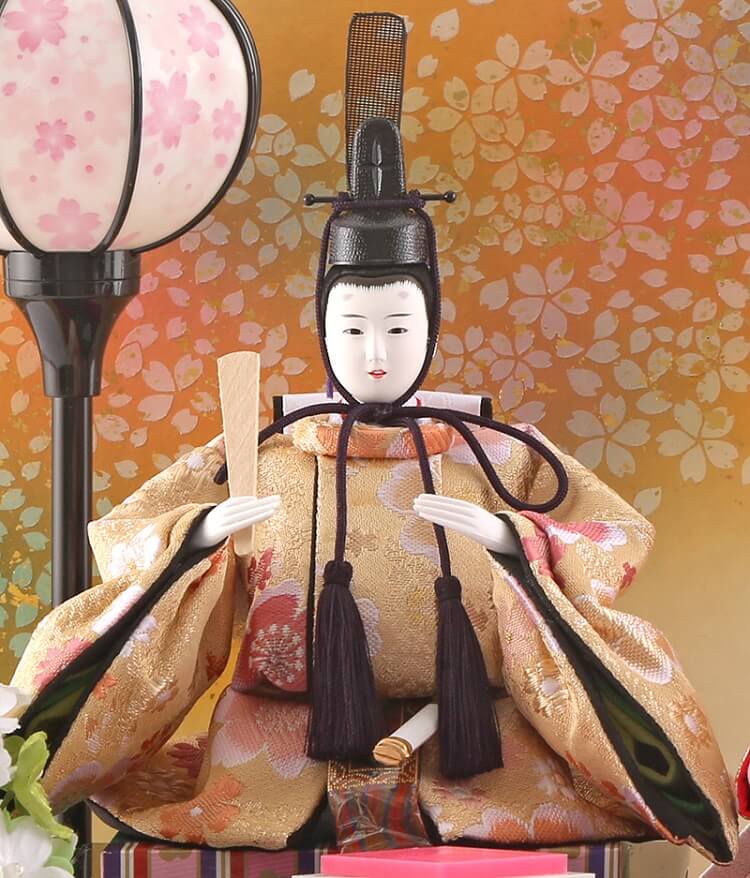
Hina Doll Compact, Miyuki (White), Pair Dolls Set
Hina Dolls (1 - 60 of 649 results) Estimated Arrival Any time Price ($) All Sellers Sort by: Relevancy Traditional Japanese Doll, Hina Matsuri Doll, Hina Ningyo, Handmade Doll, Hina Doll, Vintage Doll (70) $25.00 Vintage 1860-1930's Samurai Hina Matsuri Doll. (1.3k) $100.00 FREE shipping

Extremely Super Rare Japanese Antique Hina Doll Made in Japan
Nowadays, the dolls' festival consists in exhibiting precious ornamental dolls on a several tiers display rack or hina dan (ひな壇), covered with a red cloth (dankake 段掛) and decorated with branches of peach trees, cherry trees 🌸 or tachibana orange trees. The current form of Hina Matsuri dates back to Edo period (1603-1868).

Hina Doll, Mitsuki Standup, Pair Dolls Set
Otherwise known as Girls' Day, or 'Hina Matsuri' in Japanese, the colorful festival Dolls' Festival has been celebrated on March 3rd every year since the Heian Period (794-1192). A large part of this festival are a set of small dolls made to protect young girls in the family, called Hina Dolls.

DSC_0442 Hina matsuri, Japanese dolls, Hina dolls
Every year on March 3rd, Japan celebrates the Hinamatsuri, or Doll Festival, by arranging hina ningyo (dolls) on a platform and praying for the health and happiness of young girls. The history of this tradition goes back over 1000 years, to the Heian Period.
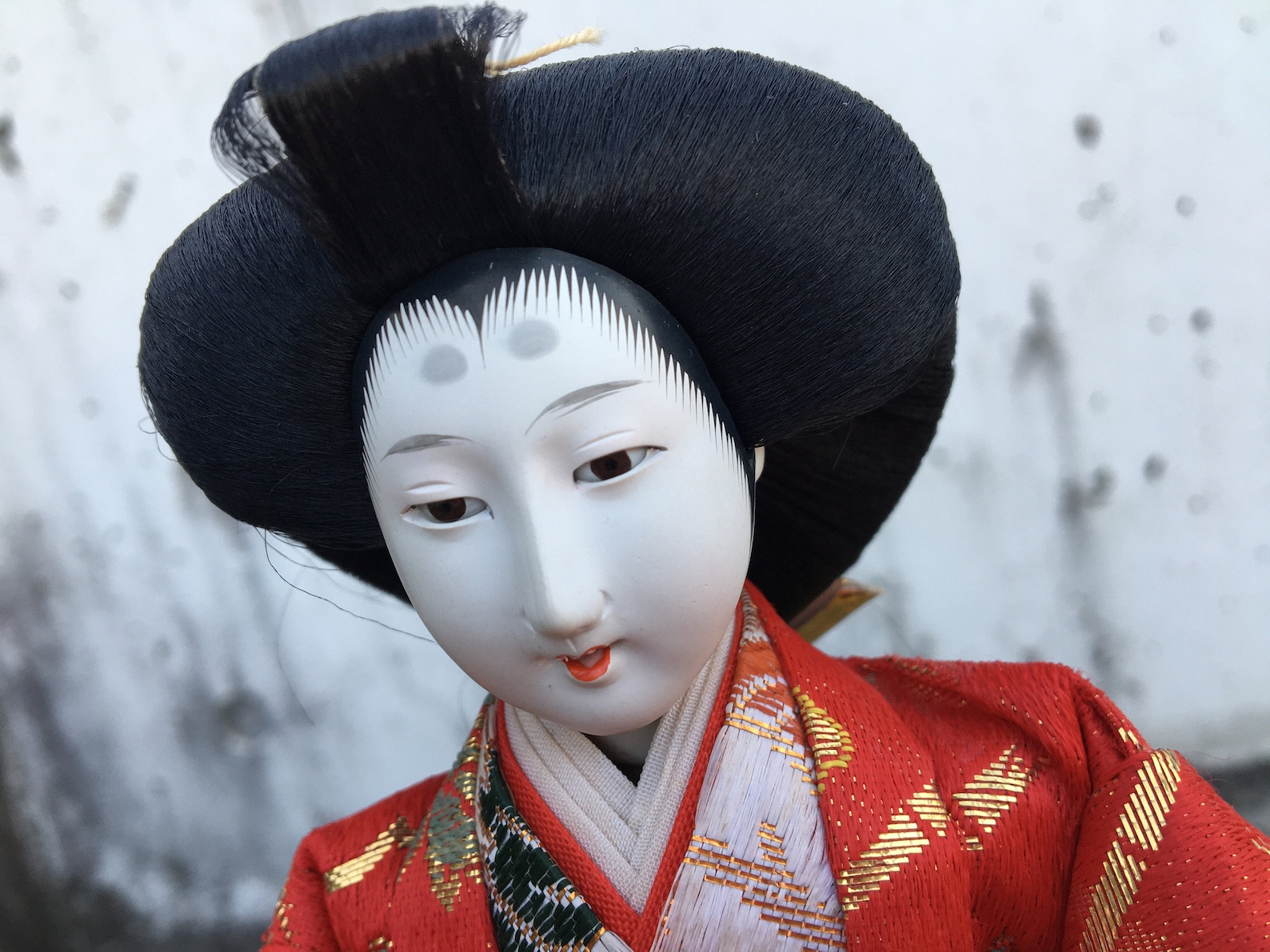
Traditional Japanese doll Hina Ningyo Handmade Doll Hina Etsy
Hina dolls are displayed only from early February to mid-March each year to wish for the healthy growth and happiness of the girl (daughter).. Reasons for decorating Hina Dolls. Hina dolls represent the marriage of the Emperor and Empress, and wishes are made that the daughter will have a happy marriage in the future.. Hina dolls also have the meaning of asking the dolls to take on the bad.
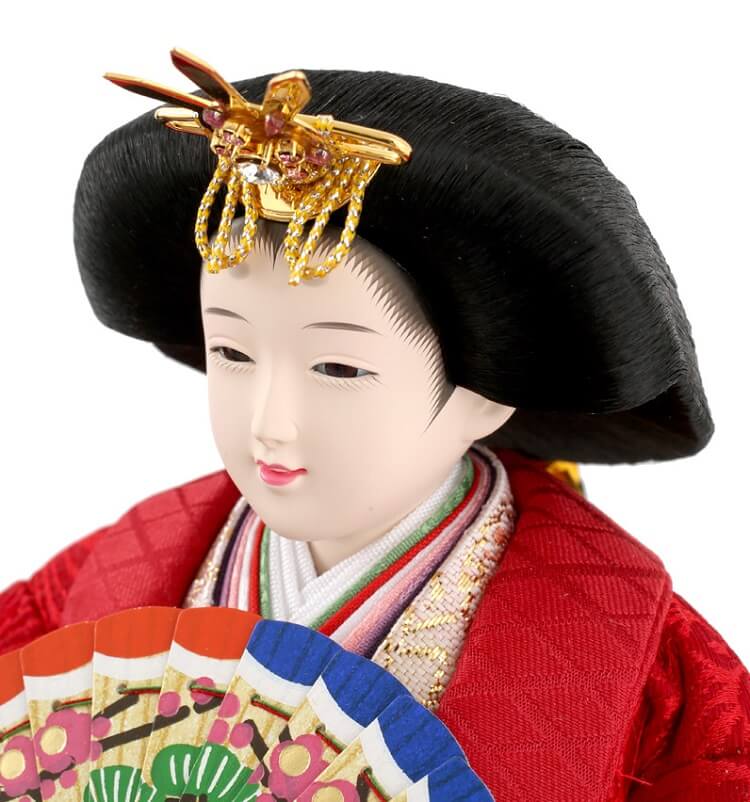
Hina Doll, Hagoromo (Purple), Pair Dolls Set
From simple wooden kokeshi to bunraku puppets, dolls play a significant role in Japanese holidays and traditions - and Girl's Day is no exception. Traditionally, each household places a set of hina dolls on an elaborate red-cloth altar as part of Hinamatsuri. This display serves as the main focus of the holiday. Adorned in ornate robes, each hina doll represents a member of the Imperial.
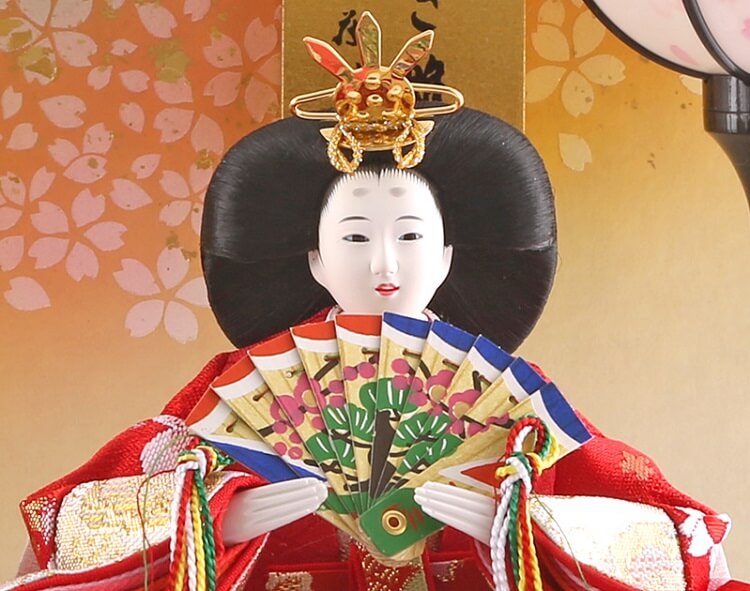
Hina Doll Compact, Miyuki (White), Pair Dolls Set
Nagashi-bina ( 流し雛, lit. "doll floating") ceremonies are held around the country, where participants make dolls out of paper or straw and send them on a boat down a river, carrying one's impurities and sin with them.
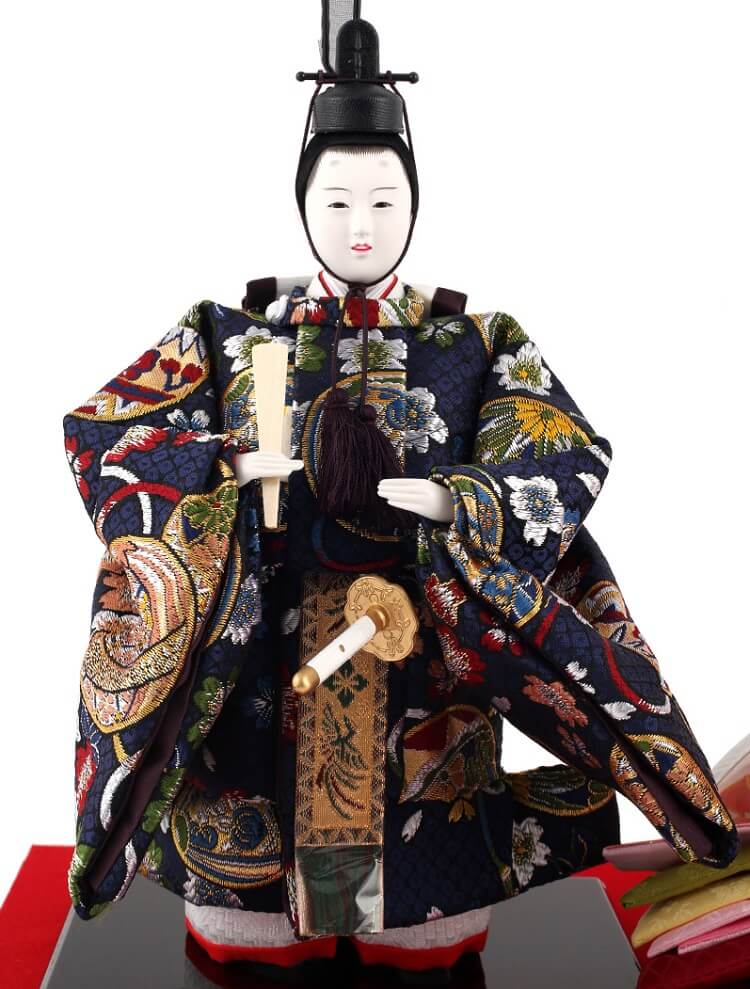
Hina Doll, Mitsuki Standup, Pair Dolls Set
The hina dolls are typically displayed on a multi-tiered platform, with each level representing a different part of the imperial court. On the top platform, you can expect to see it only containing two dolls, the dairi-bina or imperial dolls - which are always the Emperor and Empress. The second platform holds the san-nin kanjo, three ladies.
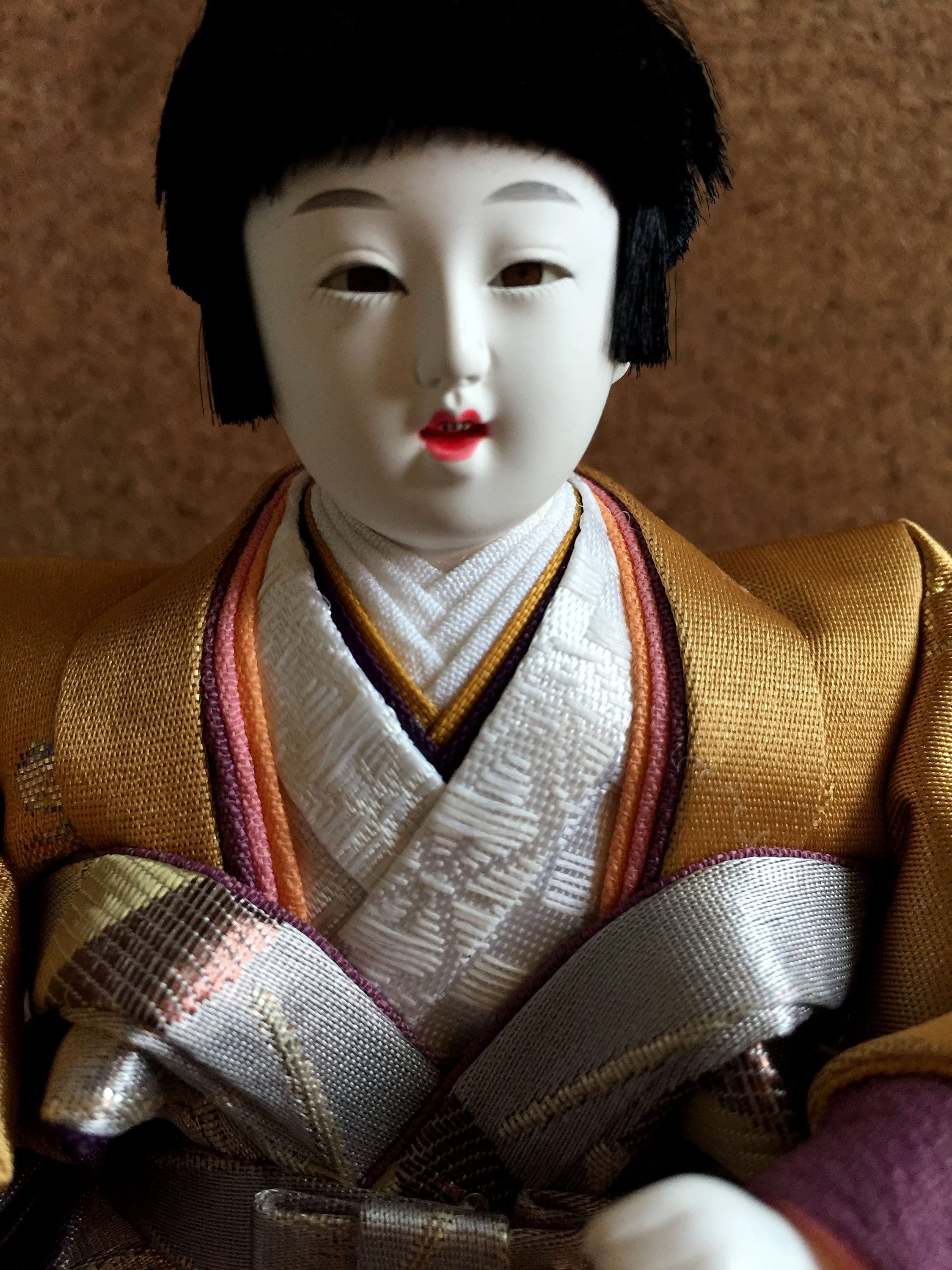
JAPANESE TRADITIONAL DOLL Hina Ningyo Matsuri Doll Hand Etsy
Japanese Hand-Made Traditional Hanging Ornament Mobiles, Hina dolls, -goldfish-, Japanese Chirimen Art (34) $22.50 $25.00 (10% off) Sale ends in 30 hours Vintage Japanese Hina Dolls Sitting Position Girls Day Vintage Japanese Hina Figures (295) $64.89 FREE shipping Hina ningyo Matsuri dolls Seto yaki pottery Japanese traditional craft Japan (909)
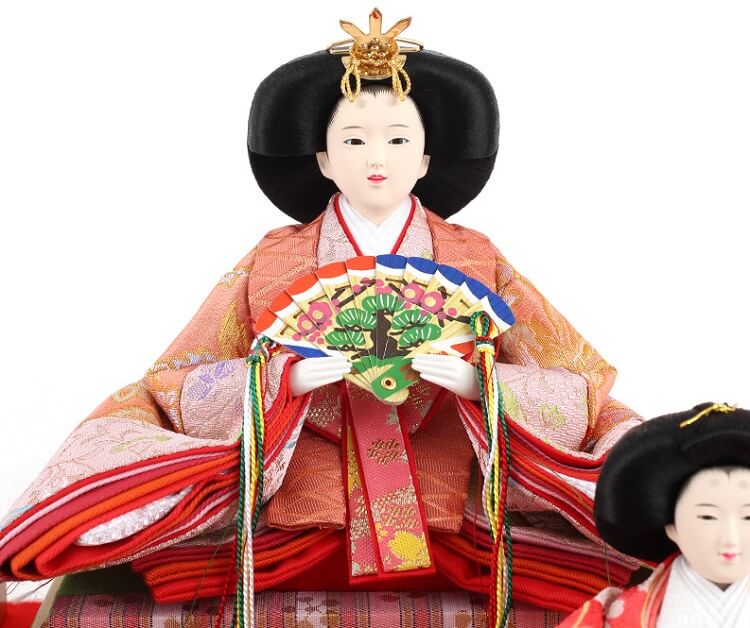
Hina Doll, Wakana Keshi, 5 Dolls Set
The festival Hinamatsuri, also called Girls' Day or Dolls Day, takes place in Japan on the 3 March. Families display a male and female doll to wish for the health, happiness, and good marriage of girls. Leaving dolls on display after the 4 March is considered bad luck and said to lead to the late marriage of girls in the family.

Vintage Hina Doll, Japanese Doll for Girls' Day, Doll Festival, Hina
Ceramic ware Festival of the 18th young bird, Arita 5th Feb-13th March. This festival held in Arita is different from other Hinamatsuri festivals as the Hina doll's are ceramic and made out of porcelain. It is a very beautiful exhibition where you can also go Cherry Blossom viewing to really get a sense of spring.

Japanese Hina dolls Ornamental Dolls, Hina Matsuri, Hina Dolls, Heian
Every year on March 3rd, Japan celebrates the Doll Festival (Japanese, Hina Matsuri).Until recently, Girls' Day was also celebrated on March 3rd. On this day every year, families set up a special step-altar on which to arrange their Emperor and Empress dolls, called "hina" in Japanese.They decorate this altar with boughs of peach blossoms and make offerings to the hina dolls of freshly made.

Hina dolls,Japan Doll japan, Japan, Hina dolls
The price of Hina dolls will vary depending on size, material and sophistication. In general, Hina dolls made using the Kimekomi method (gluing Kimono onto the doll) usually have a relatively lower price than Hina dolls made using the Ishōgi method (putting Kimono on the doll). Set of 2: costs around 50,000 yen ~ 450,000 yen.

Hina doll Hina dolls, Asian doll, Japanese dolls
The origins of Hina Matsuri. According to an ancient Chinese belief you can transfer sin and misfortune to a doll. In order to remove it from your own body, you need to toss the doll into a river. Even nowadays people float paper dolls down rivers on March 3rd in some regions of Japan. This custom is known as "hina okuri" (雛送り.

What are Hina Dolls? A Guide to Japan’s Hinamatsuri Sakuraco
Hinamatsuri (also known as Doll's Day or Girls' Day) is an annual festival in Japan to celebrate the health and happiness of young girls. We celebrate this special day by decorating with hina dolls and with festive foods, such as chirashi sushi, clam soup, and strawberry daifuku. Every year on March 3rd in Japan, we celebrate Hinamatsuri.

Japanese Hina Doll Vintage the sanninkanjo the Etsy UK
Hinamatsuri, also known as Doll's Day or Girls' Day, is a traditional Japanese festival celebrated on March 3 each year. The festival is dedicated to young girls, and the centerpiece of the celebration is the display of hina dolls, which represent the Emperor, Empress, attendants, and musicians of the Heian period (794-1185).